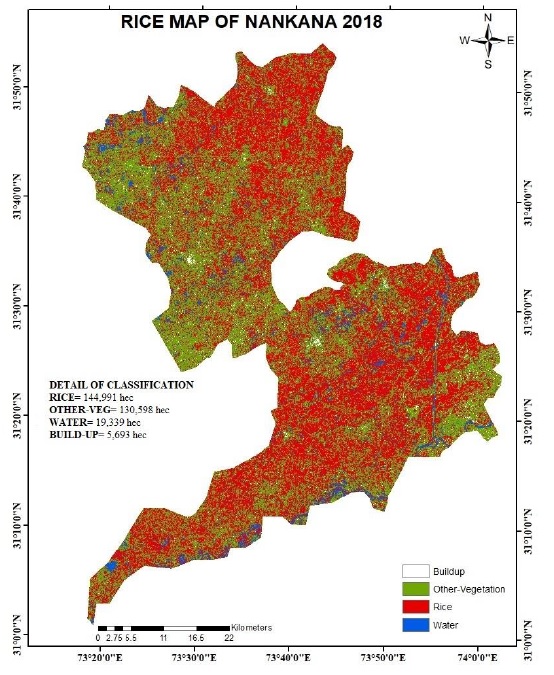Step-by-Step Processing of Sentinel-1 data for Estimation of Rice Area
Keywords:
Sentinel-1, Random Forest Classification, SNAP, GRD, LEE flterAbstract
Rice has become an essential part of four pillars of food security, especially in Asia, where it is produced over large spatial extents and also consumed widely. About 89 % of the global rice production is targeted and achieved from Asian countries. We downloaded Sentinel-1 datasets from official website of European Space Agency (ESA) for identification of rice patterns in the study site. The data was selected in Ground Range Detection (GRD) format and applied the toolbox in Sentinel Application Platform (SNAP) for further processing. We applied the orbit file for geometric and radiometric corrections, LEE filter for removal of spackles, resampling to convert 20*20m2 to 10*10m2 pixel size and finally the Random Forest Classification (RFC) to classify the satellite image. The classification results of Sentinel image for the year 2018, show that the total area of the study site was 360021 ha, including 144991 ha as rice area, 130598 as other vegetation, 19339 ha as water body and the built-up area was estimated as 5693 ha. Kappa statistics resulted the overall accuracy of 85% which is in strong agreement to ground reality. We observed that the rice area was increased from 140403 ha in 2017 to 144991 ha in 2018. The main reason of this increase in rice area was observed as the preference of local farmers to grow rice in comparison to other crops because the local government was offering high subsidy to rice farmers. Moreover, district Nankana-Sahib produces rice of expert quality which is famous throughout the world therefore, it is considered as cash crop.


















